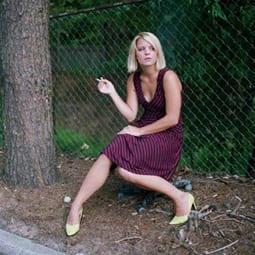Edmund Clark has been awarded the 2009 International Photography Award by the British Journal of Photography for this work. Soon, the book of Guantanamo: If the light goes out will be published by Dewi Lewis Publishing (October 2010) with supporting exhibitions in the UK, Europe and Australia. US exhibition venues are yet to be announced. Additionally, Clark’s work has been selected as one of the feature exhibitions for the European Month of Photography Festivals in Berlin, Rome, Paris, Vienna, Moscow, Bratislava, and Luxembourg in 2009 and 2010.
This is a study of home, of a very particular idea of home at a very particular time in our history. For eight years in the aftermath of the 9/11 attacks, the American naval base at Guantanamo Bay on the island of Cuba has been home to hundreds of men, all Muslim, and all detained on suspicion of varying degrees of complicity or intent to carry out acts of terror against American interests.
Rather than a document to monumentalize the historical fact of the camps, this project illustrates three experiences of home: The naval base at Guantanamo which is home to the American community; the complex of camps where the detainees have been held; and the homes where former detainees, never charged with any crime, now find themselves trying to rebuild their lives.
The post-Guantanamo environments illustrate the contrast between the shared humanity of their domestic interiors and the spaces of the detainee camps they once called home. Motifs of imprisonment and entrapment are present in both, resonating with their experiences and their personal aftermath. Glimpsing the evening sun through a window is a simple thing but readjusting to having the freedom to do so may not be so simple. Like a net curtain, memories can obscure the view.
Still-life imagery of personal space and possessions follows a long tradition of symbolism and metaphor. As in my previous work, Still Life Killing Time, this series draws on the ‘Vanitas’ style of 17th century Dutch painting in which the artist used everyday objects like hourglasses, candles, and flowers to symbolize the passage of time, the transience of temporal existence, and the vanity of man’s endeavors in relation to the rule of God.
The details of the ex-prisoners’ homes and the environments at Guantanamo reflect similar themes, only the rules of control are not divine but of a different kind of superpower – and its guards and interrogators. Identity bracelets, Red Cross calendars, and Guantanamo-issue Korans are among the objects kept after their detention. Moreover, still worn items of clothing or an image of a solitary confinement cell carried on a mobile phone may be ways of regaining a sense of personal control for some.
On the naval base, an American community lives surrounded by razor wire barricading it against a new post-Cold War threat from a religion and cultures that are not understood. Developed over the course of a hundred years, Guantanamo is an idealized small town America with its own high school, golf course, mall, and familiar fast food chains. Yet this was the location chosen precisely because it was not America: A place where hundreds of men could be held beyond the protection of US law. Motifs of entrapment are to be found here too, together with iconography redolent of religiosity and military order.
The sequence of these images brings the three notions of home together in an unsettled narrative where the eye jumps from prison camp detail to domestic still life, from life outside to the naval base and back again. This is intended to evoke the process of disorientation central to the techniques of interrogation and incarceration at Guantanamo, and to explore the legacy of disturbance such experiences have in the minds and memories of these men.

